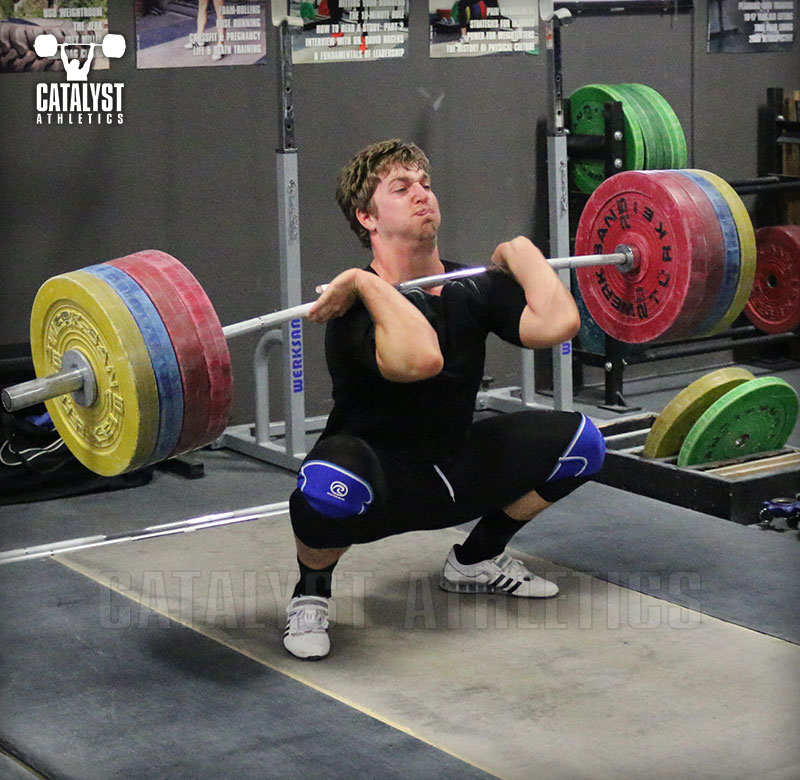Articles
When in Doubt, Simplify: Olympic Weightlifting Program Design
February 3 2014

February 3 2014

Program design for Olympic weightlifting can be an overwhelming and daunting prospect, especially these days as a lot of you who are very new to the sport are being inundated with information from all directions, much of which is incompatible and downright contradictory. This is in contrast to even a handful of years ago when lifters and coaches learned from only one or a handful of sources—their coaches and maybe some other lifters and their coaches. In this latter situation, coaches and lifters had years of foundation-building with regard to training protocols and program design before being exposed to potentially different information, providing them with a frame of reference with which to evaluate new information. When a lifter or coach doesn’t have that foundation, the difficulty of synthesizing, evaluating and eventually implementing or discarding new ideas is increased dramatically. When you’re confused and overwhelmed, always return to and rely on the fundamentals.
Exercise Selection
In order of importance and utility (this order may change somewhat depending on the abilities and needs of a given lifter):
1. Snatch and Clean & Jerk
2. Front and Back Squats
3. Snatch and Clean Pulls
4. Power Snatch, Clean and Jerk
Everything else is optional. Even numbers 3-4 are optional in some cases. Start with these priority exercises and build around them; don’t try to work them around other fancy accessory exercises you see on YouTube.
Volume
Alternate days of higher volume with days of lower volume. There isn’t a formula for this—how much of each and the difference from day to day will depend on the lifter and the program. As an example of volume, if a lifter is doing about 80 reps on Monday, Wednesday and Saturday, 40-60 reps on Tuesday and Thursday is probably about right. However, this depends a bit also on how you’re counting reps. On the big lifts (classic lifts, squats, pulls and the like), only count reps at 70% and above. On accessory work, you’ll have to use your best judgment on whether or not the reps should be accounted for in your volume calculation. For example, if a lifter is doing 3 sets of 5 Sots presses with an empty bar, that’s 15 reps, but counting in your daily volume is not advisable because it has virtually no effect. If that lifter is doing 3 heavy sets of 5 reps of stiff-legged deadlifts, it makes sense to include that 15 reps in the daily total.
Intensity
Like volume, alternate days of higher and lower intensity, corresponding to your higher and lower volume days. Sticking with the same example, Monday, Wednesday and Saturday would be the higher intensity days, with Tuesday and Thursday being the lower intensity days. This doesn’t necessarily mean the intensity is particularly low; it can even be maximal for a given exercised, but relatively low by virtue of the exercise selection. The basic and common example of this is using the power variants on these lighter days and the full lifts on the heavy days. Another way I often use is doing more overhead work on these lighter days, such as jerk variations, to reduce the load on the legs, which significantly reduces the overall taxing effect on the body.
Weight Prescriptions
You don’t need to know what percentage you should prescribe to a certain lifter for a certain lift at a certain time—all you need to know is what you’re trying to achieve with that exercise at that time and consequently what you expect the lift to look and feel like. For example, if you plan to increase loading for three weeks, week one’s lifts shouldn’t look and feel like maximal efforts. Work with the athlete to find an appropriate weight and use that as your baseline to increase from for the next two weeks. Note what percentages these weights are, and over time, you’ll start noticing pretty consistent patterns and you’ll be able to fairly reliably prescribe percentages that will need to be adjusted little if at all.
Just Do It
For all the pontificating, opining, hand-wringing and criticizing that clutters the pages of the internet, there is shockingly little action being undertaken. There is precisely one way you will know whether or not something works—do it. It may have worked for someone else, it may seem to work in theory, some phenomenal athlete may swear he uses it, but none of that means it works for you or your athletes, and rather than discussing it circuitously, you could be trying it and finding out what it does for you with certainty. Action and experimentation are critical parts of learning and improving—employ them to your advantage and save yourself the time and headaches of collective wondering.
2 Comments
Please log in to post a comment
dave
February 13 2014
Hey Greg, article after article the information you and your collogues post is just fantastic. This article touched on some of the questions I had when programming OLY percentages, intensities, and variance of volume. I've purchased and read your book and many others but sometimes like the initial paleo dieter, what do I eat? Where do I start? Well like Rob simply posted pick something from the food matrix and carry on from there. At times humanity enjoys making things more complicated than the really are.
Greg Everett
February 13 2014
Thanks Dave!
